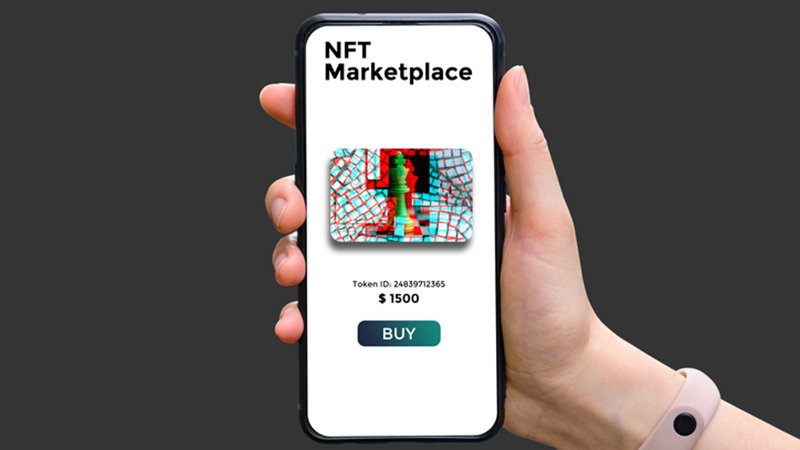Getting to Know the NFT Marketplace
The marketplace for non-fungible tokens (NFTs) is booming, but these blockchain offshoots are still mysterious to the uninitiated. Here's a quick guide to the NFT economy.
By Mark Eckerle, CPA | Digital Exclusive - 2022

Non-fungible tokens (NFTs) really came to the forefront in 2021 as another way to utilize blockchain technology as well as digital currencies. The marketplace for NFTs continues to grow as more and more individuals create digital content to be sold. Additionally, the emergence of celebrities and influencers in the NFT community has helped garner more attention from the everyday individual who otherwise may not be interested in these items.
What Are NFTs?
To get an understanding of what non-fungible means, it helps to know what fungible means. An example of a fungible token is bitcoin where trading one bitcoin for another means you have exactly the same thing. There is no difference between one bitcoin and another. Non-fungible means that each item is unique and can’t be replaced—in other words, one of a kind.
What Can Be an NFT?
In short, NFTs can be anything digital. These digital collectibles can be anything from physical artwork to trading cards to music to digital pictures. Anything that can be digitized and collected can be turned into an NFT. In early 2021, one of the events that really helped kick start the NFT movement was NBA Top Shots, which were NFTs of NBA trading cards or moments that had happened.
Why Purchase an NFT?
Buying an NFT is the same as buying a physical good, except it is in a digital format. This is similar to how many people today do not use physical cash and have transitioned to buying items with credit cards or using their phones and using online banking. This is digital ownership instead of having a closet full of goods that have been purchased. Once you purchase an NFT, these items can be tracked on the blockchain, creating an immutable and permanent transaction with full transparency.
The concept of having digital ownership rather than owning the physical item may seem foreign to many, but, as a society, we are transitioning to more of a digital economy, and this is the next step in that process. Many skeptics think that rather than buying an NFT, they can just go online and see the image or watch a video of the moment. However, the main distinction is that an NFT shows the ownership of that one-of-a-kind item. While copies can be made, that’s exactly what they are: copies, rather than the original.
What Has Been Sold So Far?
There have been a few items that have sold for large dollar amounts as well as significant use by celebrities. Some items that have sold include the following:
- Jack Dorsey, CEO of Twitter, auctioned off an NFT of his first tweet for $2.9 million.
- Auction house Christie's sold an NFT created by digital artist, Beeple, for more than $69 million.
- Sports figures, including Tom Brady, Rob Gronkowski, Derek Jeter, Wayne Gretzky, and Tiger Woods, have created digital trading cards and sold them to the public.
- Kings of Leon tokenized their latest album which garnered more than $2 million in sales and also included special ticket access to one show of every Kings of Leon tour for life.
- Grimes, who is a musician and ex-partner to Elon Musk, has sold more than $6 million of NFTs representing her digital artworks of more than 10 pieces.
These are just a few examples of things that can be made into a digital collectible. As the NFT marketplace continues to grow, there will be more and more platforms available to consumers to buy and sell these goods. Currently, the method to purchase NFTs was limited to a handful of marketplaces like OpenSea, Nifty, and Rarible, but now there are many more options. The popular sports betting application, DraftKings, has rolled out an NFT marketplace directly in their app. Tom Brady has created an NFT platform, Autograph, which will bring together athletes and brands in the sports and entertainment industry.
NFTs are an emerging trend and will continue to be popular as the transition from physical to digital goods continues. While the prices of some of these items may seem overvalued, prices will likely become much more reasonable as more options become available and the ecosystem becomes more mature.
Mark Eckerle, CPA, is a senior manager at Withum and the leader of the NJCPA Emerging Technologies Interest Group. This article is reprinted with permission by the New Jersey Society of CPAs.